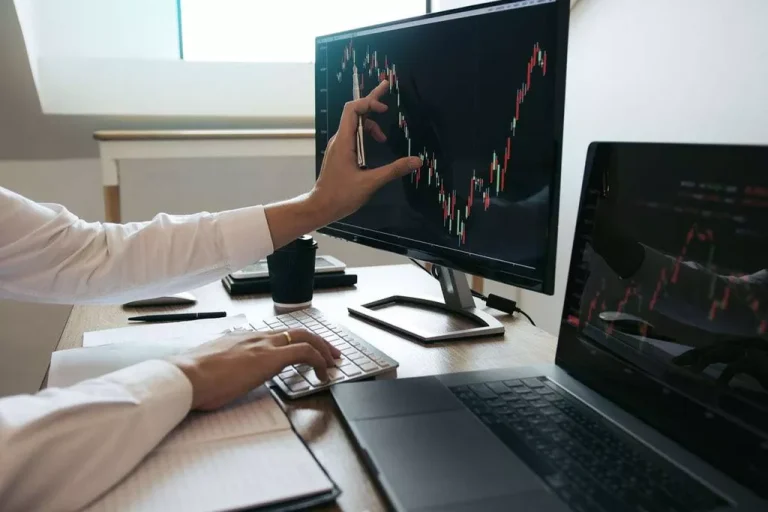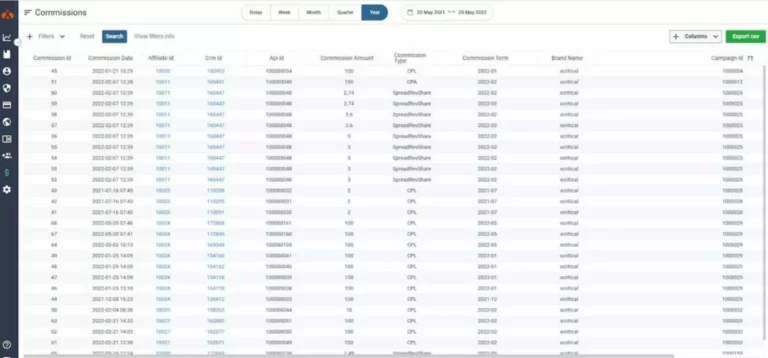Content
As a result, many traders and investors are starting to use AI-driven trading platforms to help them make better-informed decisions. It has introduced unprecedented ai trading system levels of efficiency and insight that were once not imaginable at all. Through the automation of intricate decision-making processes, AI has improved the speed and precision of trading activities.
Risks of Using Artificial Intelligence in Finance
However, it Proof of personhood is too early to conclude as the data on performance from these AI managed portfolios are sparse. The academic jury is still out on the market volatility (risk) consequences of AI trading in the stock market. This is what Datrics can do for you, applying data science and innovative software development to deliver demand forecasting, sentiment analysis, and customer analytics products to customers. Whether you’re planning to use some simple intraday trading software or wish to develop longer-term trading advice platforms, Datrics can provide turnkey solutions for any development task. Contact our managers today to tame the power of AI and apply it to your trading aspirations.
What are the benefits of FBS AI Assistant?
This lack of understanding becomes even more problematic when the system fails to adapt to sudden market changes, leaving users with limited ability to intervene or correct course in time. While the success of LOXM demonstrates how AI can effectively improve trading outcomes, it also highlights the need for ongoing refinement of https://www.xcritical.com/ predictive models to ensure they remain responsive to evolving market conditions. Artificial Intelligence (AI) has become vital in several industries, including trading, due to its ability to process large volumes of data, recognize patterns, and make informed decisions. CFDs are complex instruments and come with a high risk of losing money rapidly due to leverage. Please ensure you fully understand the risks involved by reading our full risk warning.
Use Cases of AI in Stock Trading
While using historical data to anticipate future stock market behavior has proven to be an accurate method, it isn’t foolproof. Stock markets can be volatile, and unprecedented events like climate-driven migration and geopolitical conflicts could place new stress on markets. If investors don’t consider this volatility, they could rely too much on historical data when it doesn’t capture the full picture. As competition intensifies, both investors and institutions are increasingly automating their trading processes. A single coding mistake can have extensive repercussions, especially when magnified across thousands of trades executed in milliseconds. Ensuring that trading software is thoroughly tested and error-free is crucial for maintaining trading accuracy and stability.

Gold price clings to gain around $2,670/two-week top, short-term bullish bias remains

Market analysis can be automated through AI by leveraging its capabilities in data processing, predictive modeling, and pattern recognition. AI tools can collect and analyze vast amounts of market data, including price data, news, social media sentiment, and economic indicators, in real-time. The data can then be used to perform sentiment analysis and forecast future market movements. Market analysis automation enables traders to make faster and more informed decisions, freeing up time for strategic planning and improving overall trading efficiency.
This is due to the use of AI algorithms that analyze market trends and identify investment opportunities that human analysts may miss. AI Advisors have been introduced as stock pickers to replace human advisors in actively managed equity funds. This trend is expected to continue as AI technology becomes more sophisticated and investors look for ways to maximize their returns while minimizing risk. AI algorithms can analyze market data, news sentiments and various other factors to make split-second trading decisions.
Bitcoin edges down 2.5%, trading below $98,500 on Monday, after rallying 4% and reaching a new all-time high of $104,088 last week. As BTC reached its $100K milestone, big corporates showed interest in the largest digital asset by market capitalization. While Europe has led the way with MiFID II, other regions are also working to create frameworks for AI regulation in trading. In the United States, the Securities and Exchange Commission (SEC) is actively engaged in monitoring the use of AI in trading. The SEC is particularly concerned with ensuring that AI-driven systems adhere to anti-fraud regulations and do not contribute to market manipulation. It is legal to use AI for stocks, but investors should be aware that there’s no silver bullet in investing.
The advent of exchange-traded funds (ETFs) has greatly impacted the world of portfolio investment. ETFs have provided investors with a new, low-cost way to invest in a diversified portfolio of assets. One example of an ETF fueled by AI is the AI-powered equity exchange-traded fund AIEQ, which has consistently outperformed the S&P 500.
If you’re deciding on the investments, you’ll need to determine your strategy to understand the types of stocks you want. You can also use suggested models from robo-advisors, often available for free, to help determine the mix of asset classes for their portfolio. • Natural language processing (NLP) allows computers to comprehend human languages in news articles, online sentiments and other information to identify events that move markets and assess investor sentiment. Although some people may think AI is a new technology, the rudimentary concepts of AI and its subsets date back more than 50 years. The financial world continued to adopt AI technology as advancements in machine learning, deep learning and natural language processing occurred, resulting in higher levels of accuracy.
The essential benefit of artificial intelligence in trading is its ability to learn and improve over time. AI-based systems update their models as they process more data and adapt to changing market conditions. Essentially, these systems monitor their own performance in real time and make adjustments to improve their predictive accuracy and trading outcomes.
By using low-cost ETFs and automated rebalancing, they offer a hands-off approach to investing while ensuring portfolios remain aligned with clients’ goals. One of AI’s most valuable contributions to risk management is its ability to provide real-time monitoring of market positions. AI systems can constantly track exposure to various asset classes, sectors, and geographic regions, flagging potential risks as soon as they emerge. This real-time monitoring helps traders react quickly to market changes, mitigating losses before they escalate. While AI enhances risk management by improving accuracy and speed, it is not without challenges. One major concern is the potential for over-reliance on AI models, which can lead to complacency.
This is precisely the case with stock trading, which is evolving at high speed, becoming more accessible to masses of users and revolutionizing with technological advancements at the same time. Here’s a table summarising the benefits and challenges of using AI algorithmic trading. When learning how to trade stocks with AI, choosing the most appropriate algorithm is of paramount importance. There’s a wide range of algorithms; for example, support vector machines (SVMs) are well suited for classification tasks and recurrent neural networks (RNNs) for sequence prediction. I wasn’t sure whether to post this question in a trading subreddit or an AI subreddit, but I believe I’ll get more insightful answers here. I’ve been working with AI for a while, and I’ve recently heard a lot about people using machine learning algorithms in trading bots to make money.
- Software developers will develop more powerful and faster algorithms to analyze even larger datasets.
- This creates a risk for traders who rely heavily on sentiment analysis without carefully considering the credibility and source of the data.
- The algorithms can change their own rules, such as the size of trades or timing for execution, based on their predictive assessments of market conditions.
- I wasn’t sure whether to post this question in a trading subreddit or an AI subreddit, but I believe I’ll get more insightful answers here.
- Market analysis can be automated through AI by leveraging its capabilities in data processing, predictive modeling, and pattern recognition.
By using AI in this way, investors can gain valuable insights into market trends and make more informed investment decisions. In conclusion, AI has revolutionized risk management by offering traders and institutions the ability to monitor and respond to market risks in real time. Its capacity to analyze complex datasets, simulate potential scenarios, and provide early warnings of emerging threats has made AI an essential tool for navigating volatile markets.
Leave a Reply